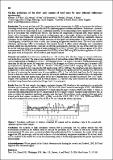Por favor, use este identificador para citar o enlazar a este item:
http://hdl.handle.net/10261/22322COMPARTIR / EXPORTAR:
 SHARE
BASE SHARE
BASE
|
|
| Visualizar otros formatos: MARC | Dublin Core | RDF | ORE | MODS | METS | DIDL | DATACITE | |

| Campo DC | Valor | Lengua/Idioma |
|---|---|---|
| dc.contributor.author | Prieto, Nuria | - |
| dc.contributor.author | Ross, D. W. | - |
| dc.contributor.author | Navajas, E. A. | - |
| dc.contributor.author | Nute, G. R. | - |
| dc.contributor.author | Richardson, R. I. | - |
| dc.contributor.author | Hyslop, J. J. | - |
| dc.contributor.author | Simm, G. | - |
| dc.contributor.author | Roehe, R. | - |
| dc.date.accessioned | 2010-03-12T11:02:13Z | - |
| dc.date.available | 2010-03-12T11:02:13Z | - |
| dc.date.issued | 2009 | - |
| dc.identifier.citation | Proceedings of the British Society of Animal Science, 116 (2009) | en_US |
| dc.identifier.isbn | 978-0-906562-65-9 | - |
| dc.identifier.uri | http://hdl.handle.net/10261/22322 | - |
| dc.description | 1 page, 1 figure.--The Proceedings of the British Society of Animal Science constitute summaries of papers presented at the Society's Annual Conference (Southport, UK, 30 March-1 April 2009). | en_US |
| dc.description.abstract | The amount and fatty acid (FA) composition of beef intramuscular fat (IMF) are key factors that influence technological and sensory quality, especially shelf-life (lipid and pigment oxidation) and flavour. Furthermore, consumers are interested in the fat composition of meat, as nutritional guidelines are recommending a lower saturated FA (SFA) intake due to its association with cardiovascular diseases. The amount and composition of ruminant IMF, which depends on factors such as the genetic origin of the animals, feeding regime, age or live weight, influences the final quality of the product, which also explains the increasing interest in defining the FA profile of meat. However, quantitative chemical techniques for the determination of FA involve extraction of total lipids and determination of FA methyl esters by gas chromatography, so that this procedure is costly, time-consuming and generates hazardous waste. The use of near infrared reflectance spectroscopy (NIR) is increasing in food analysis because it offers several advantages over conventional methods, giving fast, non-destructive, clean and cost effective measurements. Therefore, the aim of this study was to test the on-line estimation of the concentration of major individual FA (C16:0, C18:0 and C18:1) and main groups of FA (SFA, monounsaturated FA (MUFA) and polyunsaturated FA (PUFA)) of beef IMF using NIR, by direct application of a fibreoptic probe to the M. longissimus thoracis with no prior sample treatment. | en_US |
| dc.description.sponsorship | We are grateful to the Scottish Government for funding the research and Scotbeef, QMS, BCF and Signet for their substantial support. | en_US |
| dc.format.extent | 166870 bytes | - |
| dc.format.mimetype | application/pdf | - |
| dc.language.iso | eng | en_US |
| dc.publisher | British Society of Animal Science | en_US |
| dc.rights | openAccess | en_US |
| dc.title | On-line prediction of the fatty acid content of beef meat by near infrared reflectance spectroscopy | en_US |
| dc.type | comunicación de congreso | en_US |
| dc.description.peerreviewed | Peer reviewed | en_US |
| dc.relation.publisherversion | http://www.bsas.org.uk/downloads/annlproc/pdf2009/pdf2009.pdf | en_US |
| dc.type.coar | http://purl.org/coar/resource_type/c_5794 | es_ES |
| item.fulltext | With Fulltext | - |
| item.languageiso639-1 | en | - |
| item.openairecristype | http://purl.org/coar/resource_type/c_18cf | - |
| item.openairetype | comunicación de congreso | - |
| item.cerifentitytype | Publications | - |
| item.grantfulltext | open | - |
| Aparece en las colecciones: | (IGM) Comunicaciones congresos | |
Ficheros en este ítem:
| Fichero | Descripción | Tamaño | Formato | |
|---|---|---|---|---|
| 13. Prieto FA pdf.pdf | 162,96 kB | Adobe PDF |  Visualizar/Abrir |
CORE Recommender
Page view(s)
301
checked on 23-abr-2024
Download(s)
234
checked on 23-abr-2024
Google ScholarTM
Check
Altmetric
NOTA: Los ítems de Digital.CSIC están protegidos por copyright, con todos los derechos reservados, a menos que se indique lo contrario.
